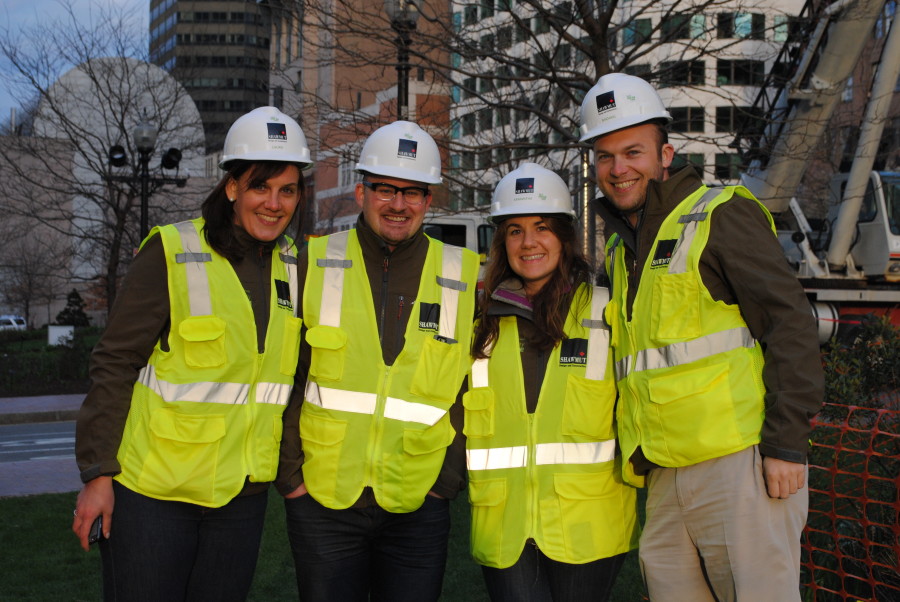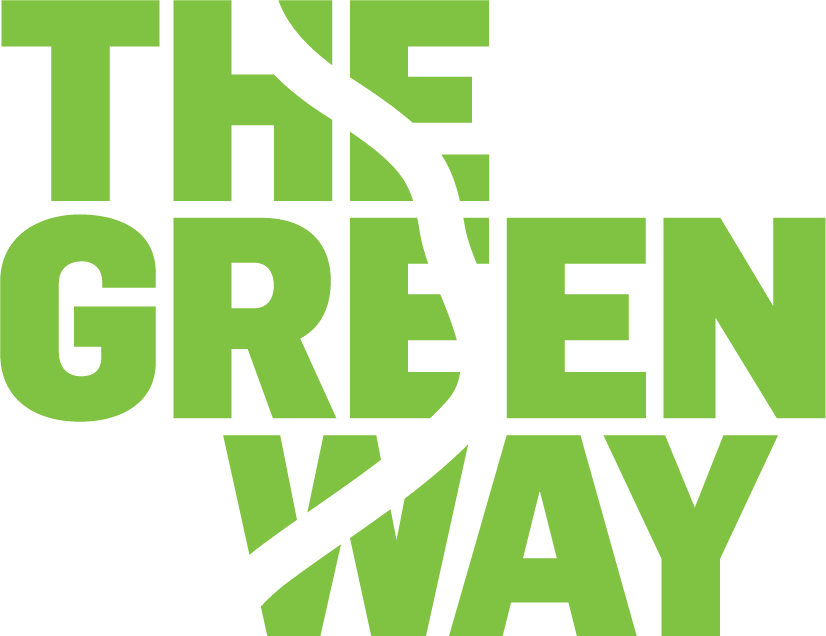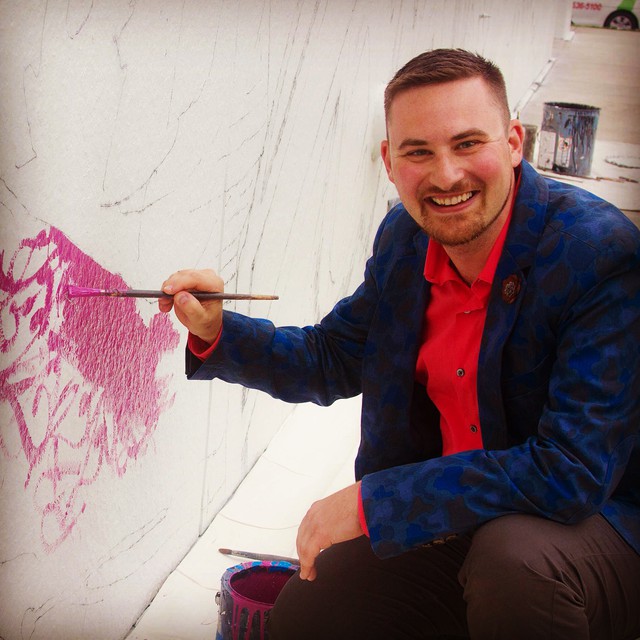“I always really loved being at the forefront of projects – anything is a possibility, nothing has been written yet.” -Lucas Cowan
How did your story with the Greenway begin?
Before I came to the Greenway I was working as the Director of Public Art for the Maryland State Arts Council where I was involved in passing state-wide legislation calling for capital improvement projects to include public art in their construction and building. Everything from juvenile detention facilities, courthouses, libraries, state universities – a percentage of the construction budget (anywhere from .5 to 1%) would be used to create a permanent piece of public art. I was there for about two years and really enjoyed the challenge that came from a very different kind of position for me, a position outside of curatorial work.
When I started to reevaluate my goals, I realized I wanted to get back to a park system partnering with organizations and cultural institutions within a thriving arts community. My true passion comes from interacting with artists and creating installations specifically in outdoor settings. I really love being at the forefront of projects – anything is a possibility, nothing has been written yet. With this in mind, my partner and I began looking for jobs in San Francisco and in Boston. Interestingly enough, two weeks after we made that decision, someone sent me the posting for Public Art Curator at the Greenway. Throughout the interview process, I learned more about Boston, and was excited to see this opportunity opening up in a community that seemed so thirsty for the arts (at the time Mayor Walsh was actively seeking a cabinet level member to head Boston’s Arts and Culture Council). For Boston, a community that is deeply established in a historical and cultural identity, it’s sometimes difficult to change direction and break into contemporary arts, especially the public arts. When I joined the conservancy in September of 2014, I was excited to take on this challenge.
What about your own background in art and creative practice?
That story goes all the way back to my childhood days in Michigan! Even in my younger elementary years I was in “gifted” programs for the arts – it was my solace and my escape. I was always in my craft box making fabric puppets or digging up clay in the backyard to make sun-dried clay pots for my mom (she still has some to this day!). As I grew, I started to develop my creative eye through black and white darkroom photography and was lucky to have a supportive group of individuals in my high school arts program to nurture that path. I took all the photo classes offered and ended up studying independently for two years in order to build up a portfolio for college admissions. When the time came I applied and was accepted into Maryland Institute College of Art, one of the oldest accredited art institutions in the country. It was such a vibrant, small community – never competitive, full of collaboration. I continued working in photography, thinking at the time that I would be a photojournalist, but then found myself gravitating towards more three dimensional pieces, specifically within the soft sculptural and installation realm. I had no idea where it would all take me but it’s where I was moving in my studio practice. I had so much support in this pursuit, mainly from MICA faculty artists Annet Couwenberg and Piper Shepard, who then connected me to a studio assistant position with Anne Wilson, a Chicago-based fiber artist. MICA opened a lot of doors for me and gave me an incredible amount of studio experience and confidence.
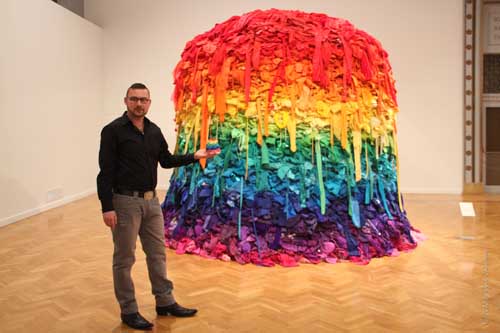
Many people know you from your experience as Curator with Millennium Park in Chicago. How did your path lead you to that position?
After my undergrad, I was accepted into School of the Art Institute of Chicago for a Masters in Arts Administration, which is a bit like the MBA of the art world. There is this line that exists as Artist/Administrator or Administrator/Artist and I knew I wanted to have both those skill sets. There were sixteen of us in the program and I was the youngest at 21 years old, the oldest student at 56. We were a very eclectic and loud-mouthed group! It was through this program that I built a connection with Millennium Park. I applied to Millennium Park Inc., the foundation that worked to raise the 256 million of private philanthropic funds used to help build the park and became the park’s first intern.
But you didn’t stay an intern…
Nope! It was in 2005 that The Boeing Company donated $5 million to Millennium Park in order to build the Boeing Galleries, an outdoor space dedicated to rotating sculptural installations. So I was invited back to coordinate those galleries, which lead to curation of those galleries, and then I became the Senior Curator for Millennium Park and for the Chicago Office of Tourism and Culture, a position I held for about 8 years.
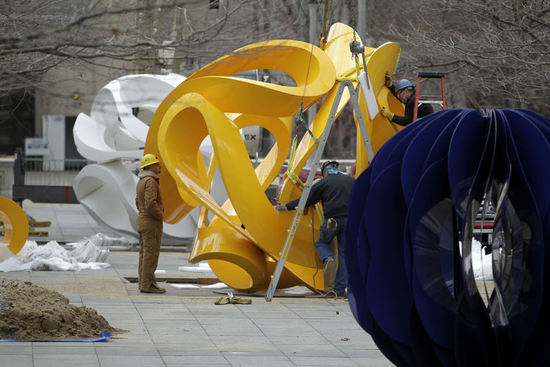
How has your studio practice influenced other roles you’ve taken on?
The number one question I get whenever I do speaking engagements or jury creative competitions, is “how are you qualified to be curator if you don’t practice studio work anymore?” Being trained in the studio arts, both in the worlds of 2D and 3D at an accredited institution has provided me perspective into the artistic world. So much of my job is grounded in my understanding and experience in installation studies, in the essence of changing an environment. This is why I have found so much success and enjoyment in working with other artists to envision their project and present it in the best way possible. I may not be creating the initial work, but I’m helping to create the environment in which it’s presented to the public.
Other than the Janet Echelman piece, do you have a favorite piece you were involved in curating?
One of my last curations I did for Millennium Park was Jun Kaneko’s Legends, Myths, and Truths, a large-scale ceramic exhibition, the first of its kind in an outdoor urban park environment. Kaneko is a Japanese Master Ceramicist living in Omaha Nebraska. His work translated so well to the public, especially for the kids. It was such a wonderful experience to become good friends with Jun and his wife, Ree.
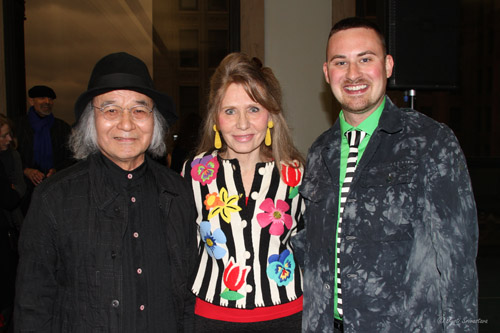

What are you currently looking at that inspires you?
I’m inspired by so many projects. As a curator it’s all about looking at what’s happening in the community, seeking out inspired partnerships and in the end, selecting to the best product possible for the people surrounding and supporting the Greenway. You’ll just have to wait and see what we come up with!
If you were to describe the Greenway itself as a work of art, how would you describe it?
I think the really interesting thing about the Greenway is its linear shape – looking at it from an aerial perspective is quite interesting. Within that linear form there certain park parcels have circles within them- from North to South you have the Tiffany Foundation Grove Carousel, the Armenian Heritage Park Labyrinth, Rings Fountain, the ring of trees in the Urban Arboretum outside of the Boston Harbor Hotel – there’s this geometric montage happening, with linear and circular elements throughout. The Greenway is abstract in nature – a little like a Rauschenberg in a way. His assemblages of materials; of gloves of hats of birds – different items picked up from different neighborhoods all coming together – it’s kind of like a hide-and-seek within the picture. These are the clues and concepts I’m thinking about when I consider pieces I’d like to bring to the Greenway.
